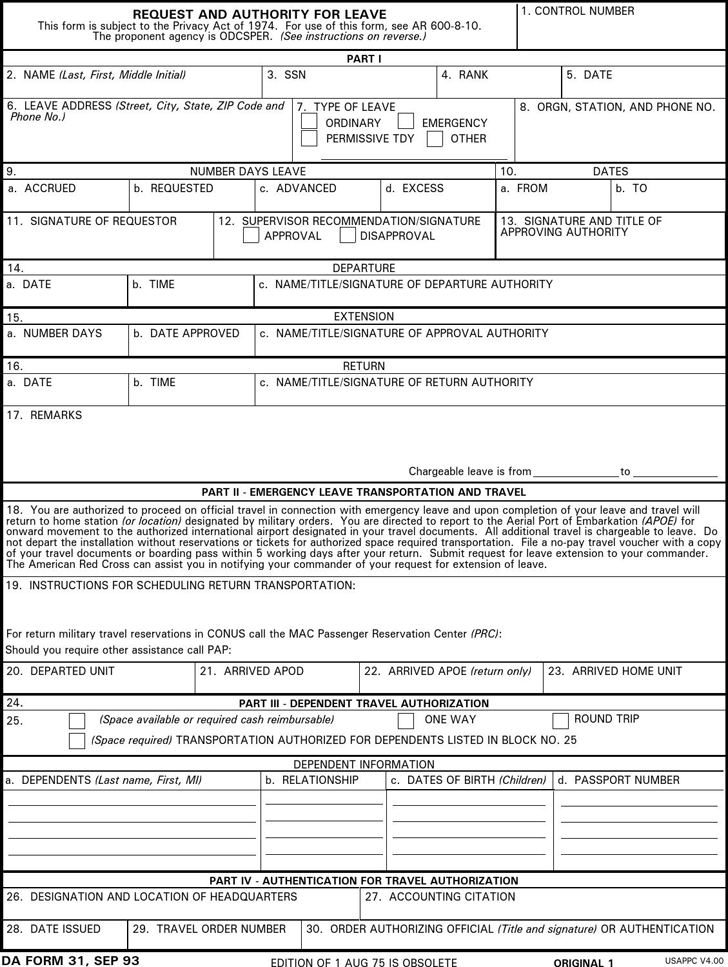Army Regulation For Paternity Leave
**Paternity Leave: A Guide to Army Regulation** *Image: NO.66-MINISTRY OF LABOR REPUBLIC OF CHINA(TAIWAN)* In the ever-evolving landscape of work-life balance, it's encouraging to see organizations recognizing the importance of family. The Army Regulation for Paternity Leave serves as a testament to the commitment of the military in supporting their servicemen as they embark on their journey of fatherhood. This comprehensive guide aims to shed light on the provisions outlined in the regulation and provide insights into the process for members of the Army who wish to avail of paternity leave. With the intent to create a personal and informative piece, we have meticulously curated essential information that abides by the Army Regulation for Paternity Leave, ensuring that you are well-prepared for this significant milestone in your life. **1. Understanding the Army Regulation for Paternity Leave** Paternity leave, as defined by the Army Regulation, is designed to provide eligible Army personnel with the opportunity to bond with their newborn child and support their spouse or partner during the crucial early days after birth. This section walks you through the key components of the regulation, including eligibility criteria, duration, and the necessary documentation required to apply for paternity leave. **2. The Benefits of Taking Paternity Leave** Taking time off work to be with your newborn is not only a privilege but also has long-lasting positive effects on both the father and the child. This section delves into the advantages of paternity leave, exploring the benefits for the father, the spouse or partner, and the newborn. From creating stronger bonds to fostering a supportive and nurturing environment, paternity leave plays a pivotal role in setting the foundation for a healthy family dynamic. **3. A Step-by-Step Guide to Applying for Paternity Leave** Navigating the bureaucratic process can be daunting, especially during a time that calls for immense emotional and physical adjustments. This section provides a detailed, easy-to-follow guide on the steps to applying for paternity leave. From filling out the necessary forms to communicating with your superiors, we break it down to ensure a smooth and stress-free experience. **FAQ Section** *Image: Learn How to Fill the DA Form 31 Request and Authority for Leave - YouTube* **Q1: How long is the paternity leave allowed under the Army Regulation?** A: The Army Regulation grants up to 21 days of nonchargeable leave to eligible Army personnel. **Q2: Can paternity leave be taken at any time?** A: Yes, paternity leave can be requested and taken within 60 days of the birth of the child, subject to the unit's operational requirements. **Q3: Can paternity leave be combined with other types of leaves?** A: Yes, paternity leave can be combined with other types of leave, such as ordinary leave or accrued leave, subject to approval by the appropriate authorities. **Q4: Does paternity leave affect my promotion or evaluation?** A: No, the Army Regulation explicitly states that taking paternity leave should not have any adverse impact on promotions, performance evaluations, or any other personnel actions. **Q5: What documents are required to apply for paternity leave?** A: The DA Form 31 (Request and Authority for Leave) is the principal document required to apply for paternity leave. Additionally, supporting documentation such as a birth certificate may also be necessary. **Q6: How far in advance should I apply for paternity leave?** A: It is recommended to initiate the application process for paternity leave as soon as the estimated due date of your child is known. This helps ensure timely processing and approval. **In Conclusion** The Army Regulation for Paternity Leave is a significant step towards acknowledging the importance of paternal involvement and family support within the military community. By creating a personal and nurturing environment for Army personnel, the regulation demonstrates the commitment of the Army towards fostering a healthy and supportive work-life balance. By availing of paternity leave, you not only have the privilege to form an unbreakable bond with your newborn but also play a pivotal role in supporting your spouse or partner through this life-altering event. Remember, the journey into fatherhood is unique and valuable, and the Army is here to support you every step of the way. [FAQ Image Source](https://i.ytimg.com/vi/I95-ULN617w/maxresdefault.jpg) [Data Source](https://english.mol.gov.tw/media/o4id2u0e/img2.png) /GettyImages-90306693-5a44ecd4482c520036778a30.jpg) Image Source : www.thebalancecareers.com
Image Source : www.thebalancecareers.com  Image Source : www.youtube.com
Image Source : www.youtube.com  Image Source : 45.153.231.124
Image Source : 45.153.231.124  Image Source : excelspreadsheetsgroup.com
Image Source : excelspreadsheetsgroup.com  Image Source : www.armytimes.com
Image Source : www.armytimes.com  Image Source : www.army.mil
Image Source : www.army.mil  Image Source : english.mol.gov.tw
Image Source : english.mol.gov.tw  Image Source : www.ibtimes.co.uk
Image Source : www.ibtimes.co.uk
Army Paternity Leave Program
/GettyImages-90306693-5a44ecd4482c520036778a30.jpg) Image Source : www.thebalancecareers.com
Image Source : www.thebalancecareers.com leave paternity army
Learn How To Fill The DA Form 31 Request And Authority For Leave - YouTube
 Image Source : www.youtube.com
Image Source : www.youtube.com da 31 form leave fill request authority i95
Da Form 31 Sample Master Template - Gambaran
 Image Source : 45.153.231.124
Image Source : 45.153.231.124 Memorandum Format Army Regulation - Financial Report
 Image Source : excelspreadsheetsgroup.com
Image Source : excelspreadsheetsgroup.com Army Reviewing Rules For Maternity, Paternity Leave
 Image Source : www.armytimes.com
Image Source : www.armytimes.com leave army paternity
Army Revamps Leave And Pass Regulation | Article | The United States Army
 Image Source : www.army.mil
Image Source : www.army.mil regulation revamps parental
NO.66-MINISTRY OF LABOR REPUBLIC OF CHINA(TAIWAN) - 勞動部全球資訊網英文網
 Image Source : english.mol.gov.tw
Image Source : english.mol.gov.tw Paternity Problems? Quarter Of New UK Fathers Do Not Take Time Off
 Image Source : www.ibtimes.co.uk
Image Source : www.ibtimes.co.uk paternity leave fathers quarter problems take off time ibtimes
Learn how to fill the da form 31 request and authority for leave. Leave paternity army. Regulation revamps parental. No.66-ministry of labor republic of china(taiwan). Da 31 form leave fill request authority i95